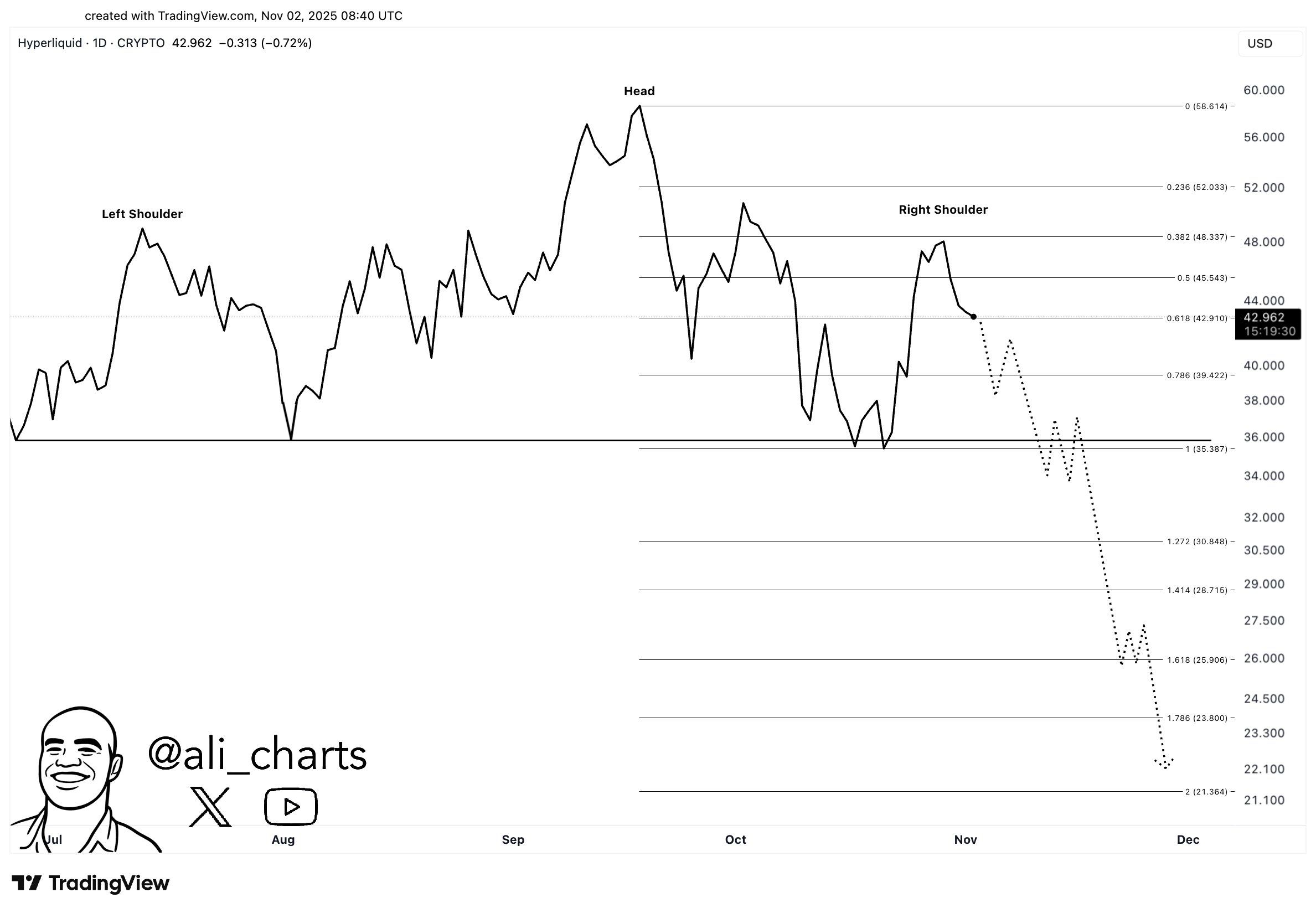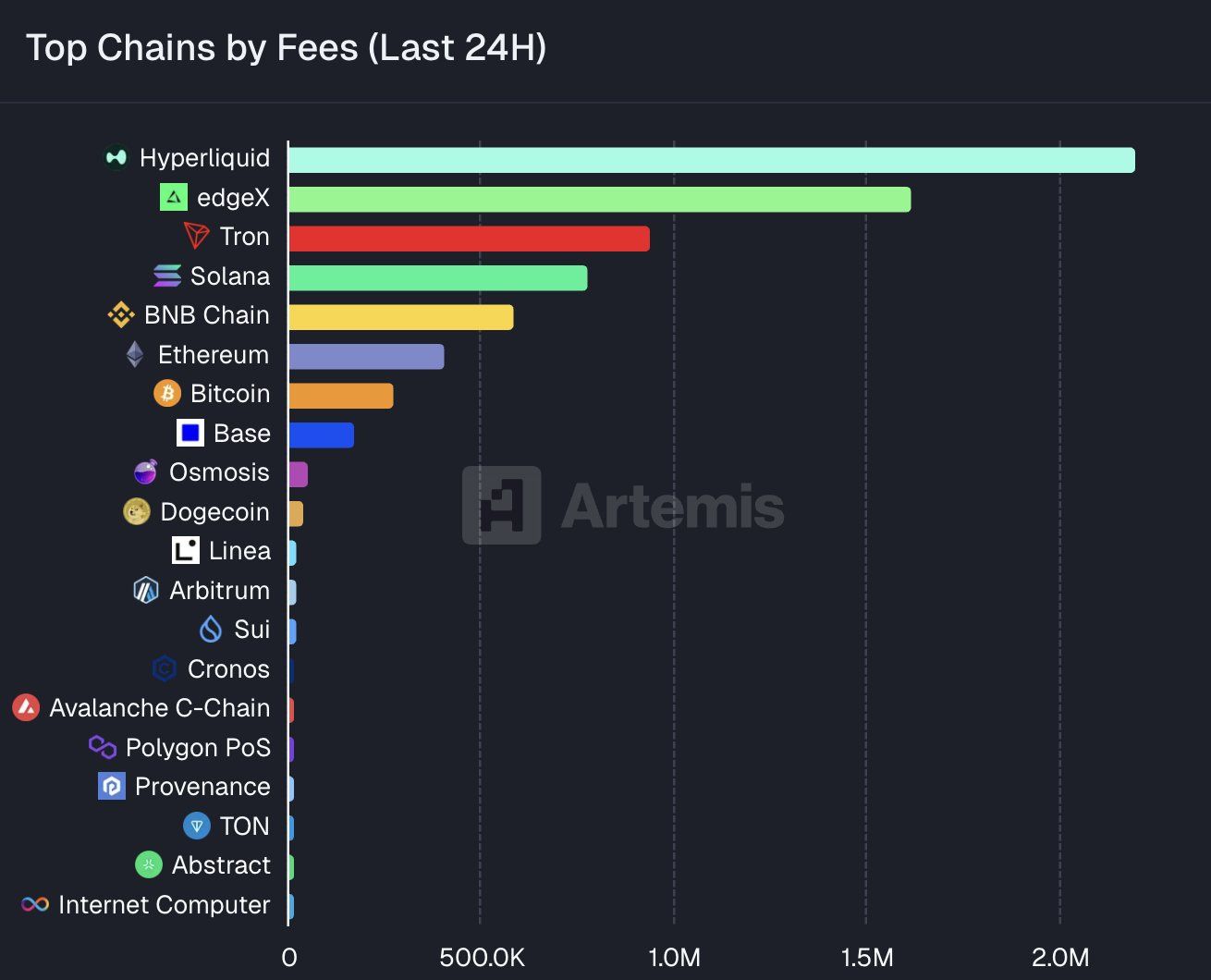After establishing itself as a leading name in the on-chain perpetual DEX space, Hyperliquid (HYPE) is entering one of its biggest stress tests since its launch.
This November, Hyperliquid will unlock a large amount of HYPE tokens, but the key question is whether this release will drive liquidity and adoption or trigger a sharp price correction.
Sponsored Sponsored
Supply and demand pressure and short-term price scenario
According to Tokenomist data, millions of Hyperliquid (HYPE) tokens were unlocked in November, representing approximately 2.66% of the circulating supply. When a project releases many tokens at once, it inevitably faces the risk of dilution and selling pressure.
From a technical perspective, several analysts have suggested that HYPE may be forming a head-and-shoulders pattern on the daily chart. This setup could predict a potential decline towards $20, which, if confirmed, could signal a near-term correction.

Meanwhile, another trader noted that recent price movements indicate “some TWAP out, delayed efficient selling”, suggesting controlled offloading by large holders. The trader added:
“I don’t know what’s going on, but I’m going to wait until there’s more clarity,” he said.
Sponsored Sponsored
On the other hand, some traders see opportunity in the volatility. According to Route2FI, “HYPE closing a 1-minute candle near $40 in November could be a temporary source of profit.”
The analyst noted the potential opportunity to profit from short-term price fluctuations. However, the HYPE unlock period can result in severe volatility, so this strategy is suitable for experienced traders.
Strong on-chain revenue and long-term balance sheet drivers
While short-term supply pressures seem inevitable, Hyperliquid’s core strength lies in on-chain revenue generation. According to Artemis data shared on X, Hyperliquid has generated over $2.2 million in transaction fees in the past 24 hours, outpacing all other blockchains.

Earlier this month, there were reports that Hyperliquid captured up to 33% of blockchain revenue. This makes it the company that earns the most fees in the crypto economy, effectively making it a “transaction fee goldmine” within DeFi. If projects use a portion of these fees for token buyback and burn mechanisms, it will partially absorb the selling pressure from HYPE unlocking and help stabilize the market.
In summary, the unlocking of HYPE, scheduled for November this year, will be a big test for the project and its investors. In the short term, dilution risk and market caution may weigh on price trends. However, Hyperliquid’s significant on-chain revenue could help offset future supply shocks. This will depend on how effectively proceeds are used through share buybacks, staking, or liquidity programs.
In the long term, HYPE’s value will be determined by how well the team can convert real revenue into tangible benefits to holders, rather than relying on short-term hype around unlocks. Even if Hyperliquid proves its model to be a sustainably profitable on-chain perpetual DEX, the November unlock does not signal the end. Rather, this could be a re-evaluation milestone for one of DeFi 2025’s most promising projects.


